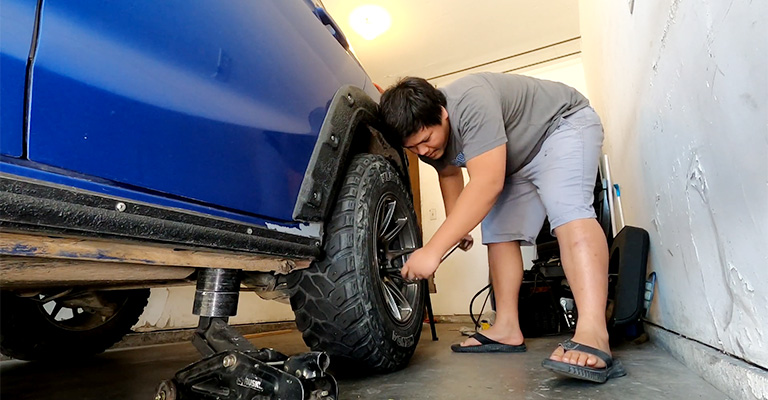Modifying the suspension of a vehicle may void the manufacturer’s warranty. Hence, if you are considering lifting your Honda Civic, it is important to understand the potential consequences.
Now the question is, can Honda Civics be lifted? Yes, it is possible to lift a Honda Civic. There are several ways to lift a Honda Civic, including using a lift kit or modifying the suspension. However, it is important to note that lifting a Honda Civic can affect the vehicle’s handling, performance, and safety.
Therefore, it may be helpful to consult with a mechanic or other automotive professional before making any changes to your vehicle. In this article, we’ll explore the feasibility and potential benefits and drawbacks of lifting a Honda Civic.

Can Honda Civics be lifted?
The short answer is that it is possible to lift a Honda Civic, but it may not be the easiest or most straightforward process. Honda Civics are not specifically designed to be lifted, so modifying one for that purpose will require custom work.
You can have a Honda Civic lifted in a few different methods. One option is to install larger tires, which will give the appearance of a lifted vehicle. This can be done by purchasing new wheels and tires with a larger diameter and width.
Keep in mind that larger tires may have an impact on your Civic’s fuel efficiency and performance, as they will require more energy to rotate.
Another option is to install a suspension lift kit. This involves modifying the suspension system of the Civic to raise it off the ground. Suspension lift kits can be purchased aftermarket and come with instructions for installation.
However, as mentioned earlier, modifying the suspension of a vehicle can affect its handling and stability. So it’s important to do thorough research and consult with a professional if you’re considering this option.
How To Lift A Honda Civic?

To lift a Honda Civic, you will need some tools.
- A hydraulic car lift
- A set of jack stands
- A floor jack
Now follow the step-by-step procedure below:
Step 1
Put the vehicle in park and engage the emergency brake.
Step 2
Position the car lift or the floor jack under the designated lifting points on the car. These points are usually located near the front and rear wheels or under the car’s frame. If you need help locating the lifting positions on the Honda Civic, it’s best to consult either the owner’s handbook or a service manual.
Step 3
Gently use your vehicle lift or floor jack to raise the vehicle. When using a lift or jack, you must adhere to the manufacturer’s guidelines.
Step 4
When the vehicle is at the proper height, the jack stands may be positioned beneath the appropriate locations. The precise locations of the Honda Civic’s support points may be found in the vehicle’s owner’s handbook or a service manual.
Step 5
As you lower the automobile onto jack platforms, take care to ensure that it is in its place.
Step 6
When you are finished working on the car, use the car lift or the floor jack to lift it off the jack stands. Bring the vehicle back down to the ground slowly, then remove the jack or lift.
It’s important to note that lifting a car can be dangerous, especially if you do not have the proper equipment or experience. So, if you are not comfortable raising your Honda Civic, it is recommended that you have it done by a professional mechanic.
Lifting a Honda Civic: Is it Worth it?

Now that we’ve established that it is possible to lift a Honda Civic, the question becomes whether it’s worth it or not. There are a few potential benefits to lifting a Honda Civic, such as increased ground clearance for off-roading or the ability to navigate through rough terrain.
However, there are also some drawbacks to consider. One potential downside of lifting a Honda Civic is the impact on the vehicle’s handling and stability. As mentioned earlier, modifying the suspension of a vehicle can affect its performance on the road.
This may be especially noticeable in a smaller car like a Civic, which is not designed for off-roading or extreme terrain.
Another potential drawback is the cost. Lifting a Honda Civic will likely require the purchase of new wheels and tires or a suspension lift kit, both of which can be expensive.
In addition, the installation process may require the services of a professional mechanic, which can add to the overall cost. If you are wondering about the process of installing a Lifting Kit in the Honda Civic, take a look at this video.
FAQs
Lifting a car can sometimes be a confusing thing. Take a look at these frequently asked questions for further clarity.
Q: Which Lifting Kit Should I Use To Lift My Honda Civic?
You can lift all the models from the 2016 to 2022 Honda Civic with the 38mm (1.5 inches) lift kit. Our steel spring spacers will allow your stock Honda suspension to be lifted by around 1.5 inches (38mm).
Q: How can I raise the ride height of my Honda Civic?
Installing Coil Spring Spacers. Coil spring spacers are added to a vehicle’s rear suspension to limit the flexing of the coils during suspension movement. Therefore, the assisters may raise a vehicle’s braking distance by almost 10-15 mm.
Q: Can you tell me the drawbacks of installing a raise kit?
The raise kit’s major drawback is that it exposes the frame and leaves gaps in the wheel wells. Thus, the factory bumpers do not rise with the body because of where the body is located. Frame visibility is a typical gripe about raise kits.
Conclusion
While a lifted Civic may have some appeal for off-road enthusiasts, it could also negatively impact the vehicle’s handling and stability. Besides, it also comes with a high price tag.
Lifting a Honda Civic is a big choice, so be sure that you know all the benefits as well as the drawbacks before you make a final call. In conclusion, it is possible to lift a Honda Civic, but it may not be the best idea for everyone.
So, decide first if lifting your Civic is good for you, then make a call. Hope this article will help you to make a decision which is most favorable for you. Happy riding!

Leave a Reply